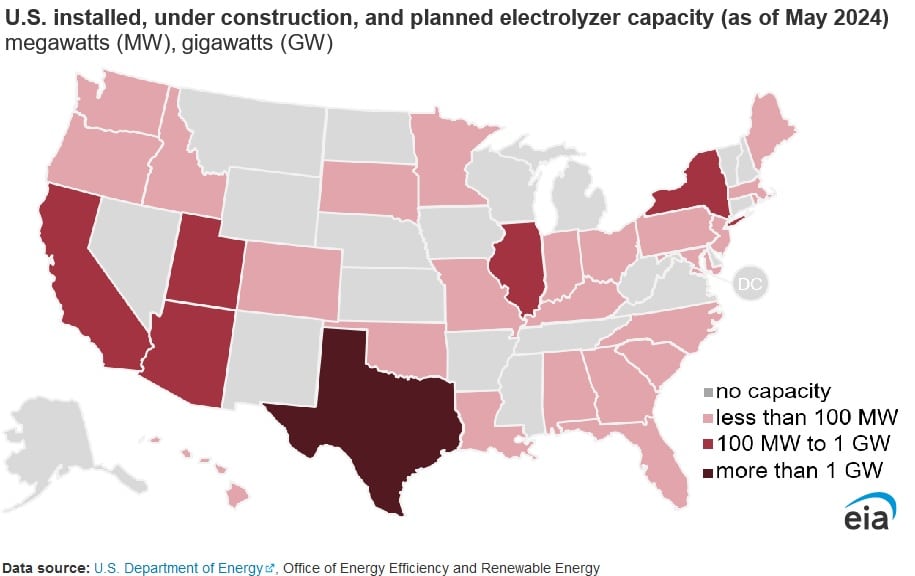U.S. to Expand Hydrogen Production Using Electrolyzers: EIA

Developers plan to expand U.S. hydrogen production employing technologies that make use of electricity, according to a June 6 report published by the U.S. Energy Information Administration. The use of planned electrolyzer installations would shift hydrogen production away from its traditional reliance on hydrocarbon feedstocks towards the usage of electricity to produce hydrogen from water.
According to the U.S. Energy Department’s Hydrogen Program Record, if electrolyzer construction is undertaken as planned, U.S. electrolyzer capacity would expand from 116 megawatts (MW) of existing capacity to 4,254 MW. Moreover, if all mapped out projects are executed, yearly U.S. hydrogen production via electrolysis could add up to 0.72 million metric tons (MMmt), in comparison to the 10 MMmt of hydrogen, which is currently produced from fossil fuels and as a byproduct from other industrial sources. Electrolyzers that fulfil a certain threshold of low carbon intensity could be eligible for a production tax credit, if developers commence building by 2033.
The 10 MMmt of hydrogen produced yearly in the U.S. is provided by steam methane reforming or produced as a byproduct hydrogen obtained from a chemical plant or other facility where hydrogen is not the main product. The agency estimates U.S. steam methane reforming capacity to be 7.6 MMmt of hydrogen per year.
Electrolysis is the process by which electrolyzers produce hydrogen. As part of the process, hydrogen is separated from water using an electrical current, with oxygen as the only byproduct. Hydrogen produced by electrolyzers is carbon neutral if the electricity utilized is produced from renewable resources. According to the International Energy Agency, Proton Exchange Membrane and Alkaline are two kinds of electrolyzer technologies currently commercially used, both of which require enhanced developments to stay competitive. These technologies differ by construction cost, start-up times and materials used to convert electricity to hydrogen. As it stands, traditional steam methane reforming technologies produce the majority of the hydrogen commercially utilized in the U.S.
EnerKnol Pulses like this one are powered by the EnerKnol Platform—the first comprehensive database for real-time energy policy tracking. Sign up for a free trial below for access to key regulatory data and deep industry insights across the energy spectrum.
ACCESS FREE TRIAL